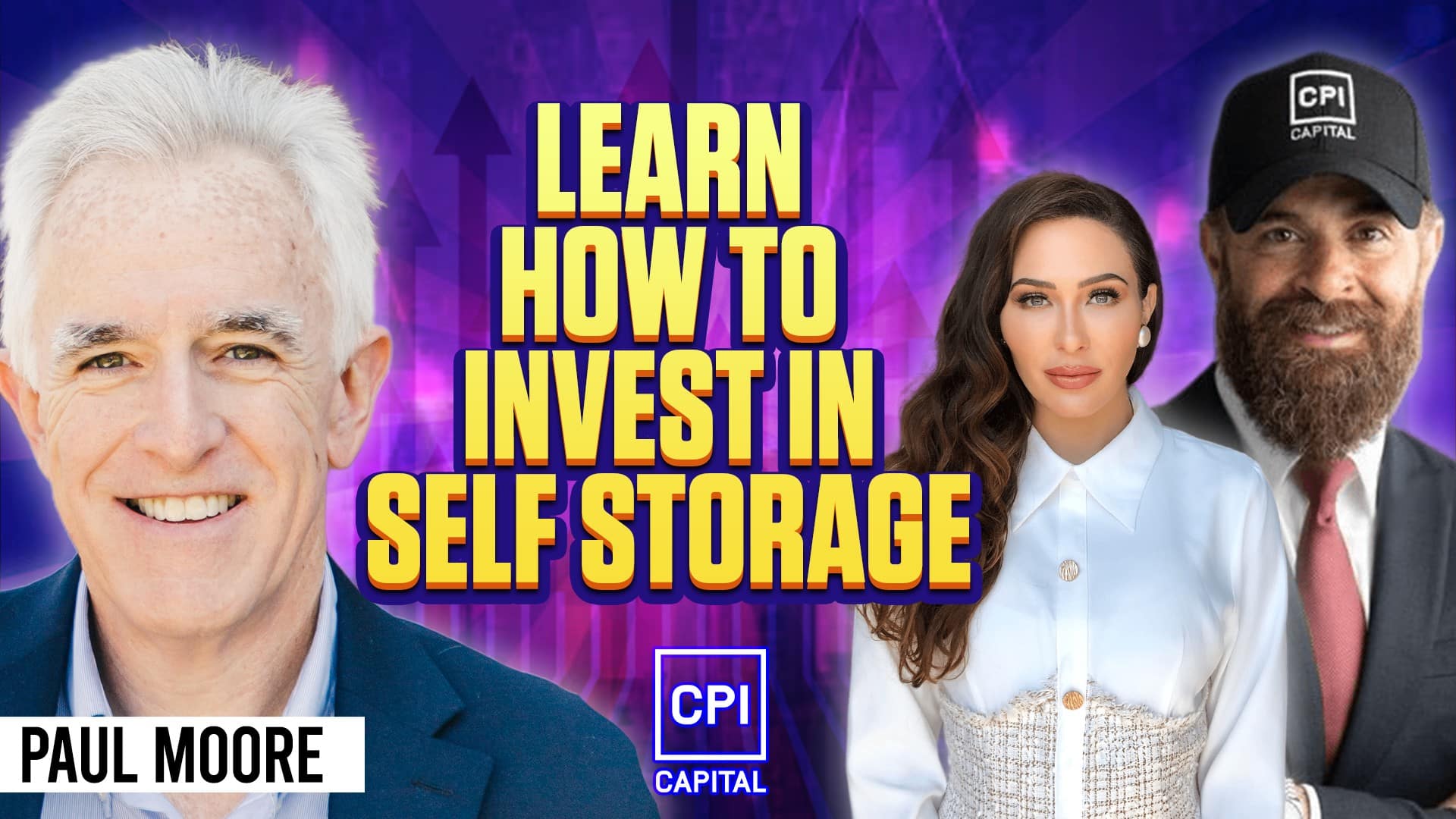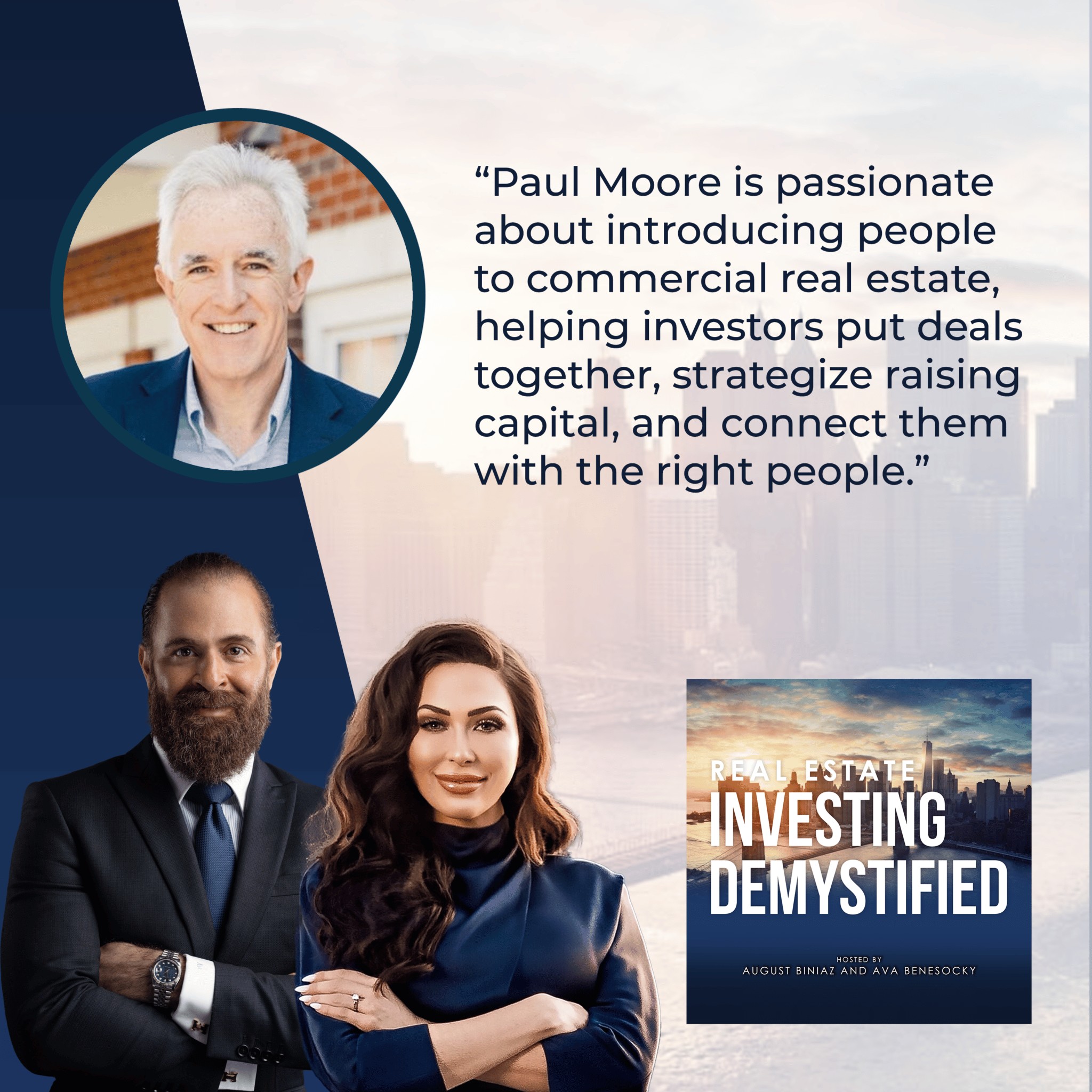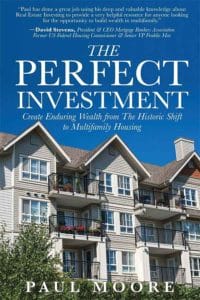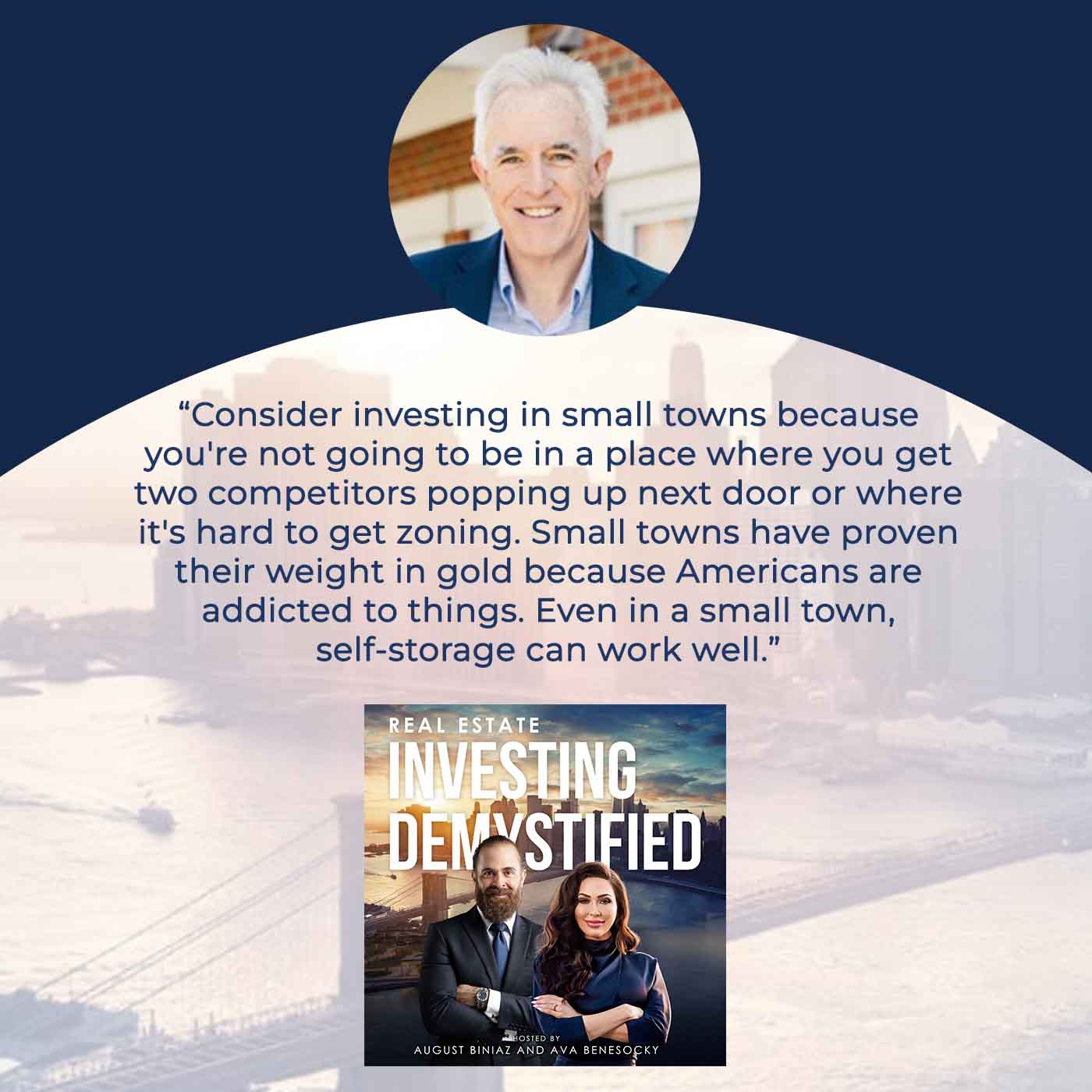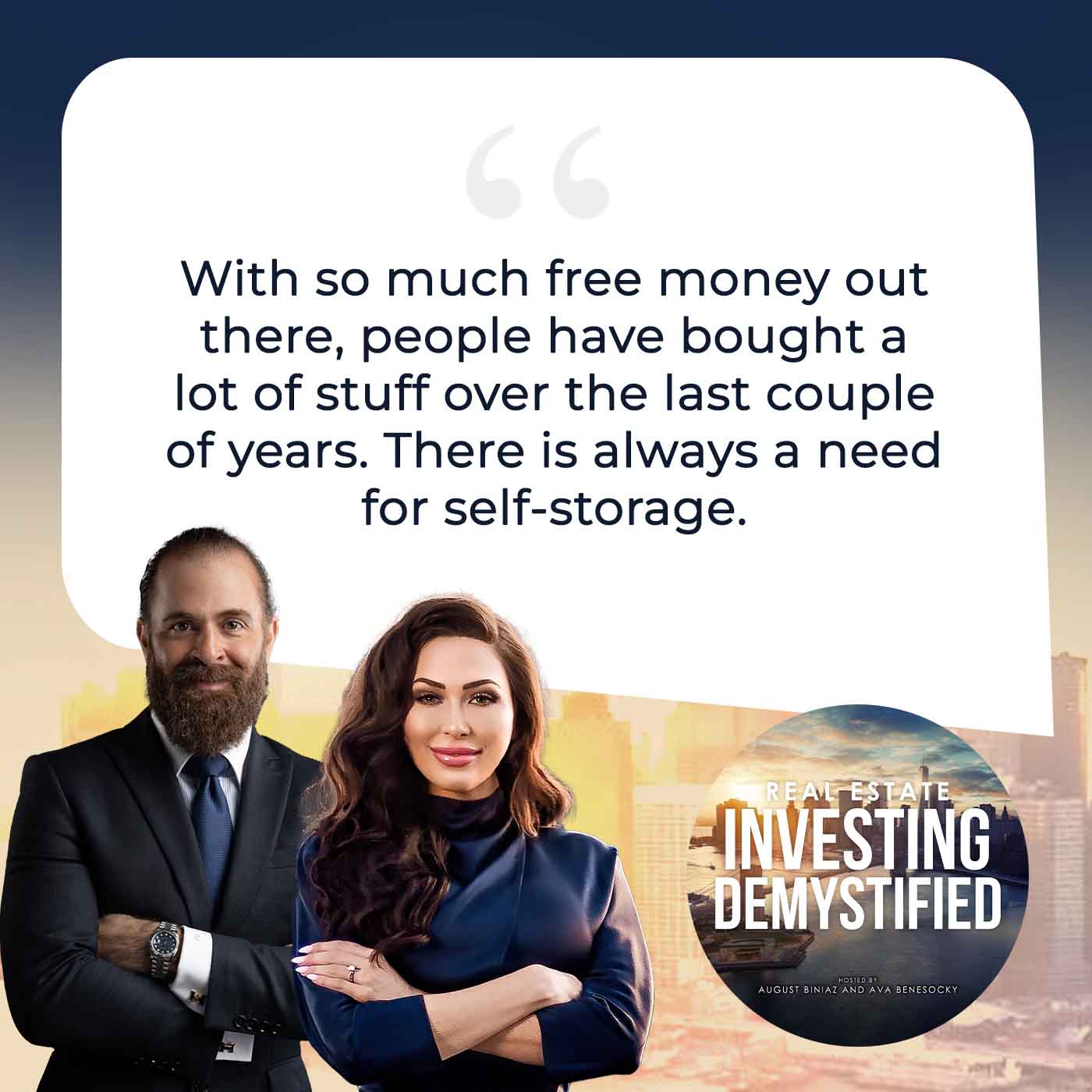Self-storage is a real estate niche that’s hard not to love. And it has proven itself to be quite the area to be in with the current challenges in the market. In this episode, the founder at Wellings Capital, Paul Moore, provides an in-depth discussion on how to invest in self-storage. Before that, he breaks down how self-storage mitigates inflationary concerns, how its cap rates compare with multifamily, and why it has more creative ways to increase NOI. Paul then shares how you can overcome the barriers to entry in commercial real estate and where is the best city in 2023 to invest in self-storage. This conversation is full of great insights that can help you jumpstart on the space. So tune in and don’t miss out.
Get in touch with Paul Moore:
LinkedIn: https://www.linkedin.com/in/paul-moore-3255924/
Website: https://www.wellingscapital.com/
If you are interested in learning more about passively investing in multifamily and Build-to-Rent properties, click here to schedule a call with the CPI Capital Team or contact us at info@cpicapital.ca. If you like to Co-Syndicate and close on larger deal as a General Partner click here. You can read more about CPI Capital at https://www.cpicapital.ca. #avabenesocky #augustbiniaz #cpicapital
—
Watch the Episode here
Listen to the podcast here
Important Links
- How to Lose Money
- Storing Up for Profits: Capitalize on America’s Obsession with Stuff by Investing in Self-Storage
- Perfect Investment: Creating Enduring Wealth From The Historic Shift to Multifamily Housing
- Wellings Capital
- The ONE Thing
- Exodus Cry
- Amazon – Storing Up for Profits: Capitalize on America’s Obsession with Stuff by Investing in Self-Storage
About Paul Moore

He completed over 85 real estate investments and exits, appeared on HGTV’s House Hunters, rehabbed and managed dozens of rental properties, and developed a subdivision. After completing three successful real estate developments, including assisting with the development of a Hyatt hotel and a very successful multifamily project, Paul narrowed his focus on commercial real estate in 2011. Paul is married with four children and lives in Central Virginia.
Learn How To Invest In Self Storage – Paul Moore
We’re excited about this episode. We have Paul Moore joining us. Before I get into who Paul is, please like and subscribe as it helps us to continue to build our channel and bring you guys great content and great expert speakers.
I’m excited to have Paul on our show. He’s a thought leader and an author. He’s all over the place. He’s connected to BiggerPockets and everybody knows how Goliath of a real educational platform they are. I can’t wait to get a crash course on self-storage because it seems to be the new in and fun thing. All the cool kids are doing self-storage. We want to get a crash course. Maybe we can tell our audience a little bit more about Paul and his background.
Wait until you hear about Paul. After a stint at Ford Motor Company, Paul cofounded a staffing firm, where he was a 2X Finalist for Michigan Entrepreneur of the Year. After selling to a publicly traded firm, Paul began investing in real estate. He launched multiple investment and development companies, appeared on HGTV, and completed over 100 commercial and residential investments and exits.
He has contributed to Fox Business and The Real Estate Guys Radio. He’s a regular contributor to BiggerPockets, producing live shows, recorded videos, and blog content. Paul also co-hosted a wealth-building podcast called How to Lose Money. He’s been featured on over 200 podcasts. Paul is the author of Storing Up for Profits: Capitalize on America’s Obsession with Stuff by Investing in Self-Storage, which is BiggerPockets publishing 2021.
Also, The Perfect Investment: Creating Enduring Wealth From The Historic Shift to Multifamily Housing. Paul is the Founder and Managing Partner of Wellings Capital, a real estate private equity firm. I’m excited because we believe this interview with Paul will bring value to both passive and active investors looking to learn more about self-storage investing. Welcome, Paul. We’re excited to have you here.
It’s great to be here. It’s such an honor. Thank you so much.
The honor is ours. Let’s get started.
Paul, maybe you can start by telling us a bit about your background and then your start in real estate, please.
I told my wife, and I promised her that I was going to stick with multifamily because I had jumped around. I was a certified shiny object chaser. I thought about putting Serial Entrepreneur on my business card and I was proud of that. It was terrible. I thought I was a full-time investor. I had sold my company in 1997 and I thought I was a full-time investor, but I was not. I was a full-time speculator. As a result, I lost a lot of money and I made a lot of money, but it was inconsistent. I didn’t like that.
As I flipped all those houses, flipped waterfront lots, and did everything I did, I was trying to figure out how to get involved in commercial real estate. I stumbled into it during the Bakken Oil Boom that happened. It was in Alberta and it was all the way down through North Dakota. We invested in oil and gas in 2010 and we built a multifamily complex.
I loved multifamily and so I decided to stay in multifamily. I wrote that humbly entitled book called The Perfect Investment, but the perfect investment is not perfect if you can’t find deals that make financial sense. Though a lot of people are still finding good multifamily deals, our company wasn’t doing it and our acquisition pipeline was not finding the deals that we needed to safely make a profit.
I was in my 50s and I thought, “This is starting to feel like speculating again.” We decided to look for asset types outside of apartments and found mobile home parks, self-storage, and other asset types with a lot more meat on the bone and a lot more upside. By investing in those, we have found a lot more profitability for our funds and our investors.
I want to get into the high inflation environment we find ourselves in and explore the different asset classes within commercial real estate because there’s a spectrum of these different asset classes and then capturing inflation. I will make an example. For example, this spectrum starts with hospitality, where you can fight inflation because you can change your rates overnight.
If you own a hotel, you can change the rates overnight, and then you’ve got multifamily, where you can change your rates annually or every term as long as there’s no rent control like here in Vancouver. You have other asset classes, for example, industrial, which is an average ten-year contract that you’re in, so it’s difficult to fight inflation. Talk to us about self-storage, how self-storage captures inflation, and try to mitigate inflationary concerns.
August, I’ve been on a lot of podcasts and no one has ever put it so well. That is seriously insightful. It’s important to see the difference between these asset classes in an inflationary environment. Self-storage, probably second to hospitality, captures inflation very well because I know a guy who does twenty-year Amazon warehouse leases.
I’m worried about the guy because those leases are set up twenty years in advance. I don’t know how it’s going to go for him in 7% or 8% inflation, but self-storage has a month-to-month lease and that’s one of the beauties on multiple fronts of self-storage. We’re able to raise the rates every month if we wanted to.
We probably wouldn’t do that but let me tell you a few things about self-storage. If you rent an apartment for $2,000 a month and the landlord raises your rent by 10%, you might leave rather than sign that paper and pay an extra $2,400 next year. If you’re renting a self-storage unit for $100 a month, you get a 10% increase, you might grumble, but you’re probably not going to spend a weekend, rent a U-Haul, get your friends together to move your treasures down the street just to save $10 a month. That’s one of the beauties of self-storage.
Tenant retention has much more likeness and the relativeness of the increase in rent doesn’t affect the tenant much. That’s beautiful. I talked about this a lot that we’re in the business of increasing NOI. We’re in real estate investing, but the mission here is to increase the NOI. In a self-storage situation, NOI can be increased nominally, but in our books, that’s tremendous.
It makes a huge difference and I’ve got tons of examples that we can talk about in that regard if you want.
Go ahead. Give us some more information if you’re good.
Going back to that comment, I know a self-storage operator right up the road. I can be there in six minutes and he said, “I’ve had this self-storage facility for 28 years. I’ve only raised the rent four times.” I’m like, “Seriously? You want to sell?” A lot of mom-and-pop operators don’t have the desire or the knowledge or the resources to increase NOI, the Net Operating Income, and maximize the value of the facility. We can buy a facility from these mom-and-pop operators at a fair price but have a lot of upsides. For example, some of them might say, “There are six acres out back. I have no use for it.”
I’m like, “Great. We can put portable units there. We can gravel or pave it and put both an RV and storage. We can maybe build more units on that six acres,” and that’s a great problem to have. Another example of a value-add. There are so many low-cost value-adds. One would be adding U-Haul. U-Haul will work with private self-storage owners and operators to add a U-Haul. You put a U-Haul truck out front. You stage it there and you sign it in and sign it out. You can make between $1,000 to $5,000 a month.
Let’s look at the math on that. Let’s say you make $3,000 a month in commission from U-Haul. That’s $36,000 a year. The value formula in commercial real estate says that the value equals the net operating income divided by the cap rate. $36,000 a year in additional net operating income divided by, let’s say, a 6% cap rate and that’s the capitalization rate. That’s the general rate of return you would expect on this asset type in this location at this time. It’s 6%, so 0.06. $36,000 by 0.06 is $600,000 in additional value-add to the facility.
If you bought that facility for $2 million with $800,000 down, you got a 75% return on your equity in the value of that asset. That’s powerful. Other value-adds would include filling 40 vacant units. Let’s say it’s $125 a unit. In twelve months, that’s $60,000 a year in extra income, but that’s $1 million a year and extra value at a 6% cap rate or raising the rent by 10%. Let’s say that’s $12.50 a month. That might not sound much, but if you multiply that over 500 units times 12 months, that’s $75,000 in additional income and $1.25 million in additional value.
Other examples would be renting a billboard, a propane filling station, an ATM, a cell tower lease, or even a carwash. That would be perfect out front. Adding a point of sale items like selling locks, boxes, tape, and scissors. Also, adding insurance and late fees. You can make $5 a month from tenant insurance, but if you multiply that over 500 units times 12 months, that’s $30,000 a year. That’s enough to pay for an employee and it’s $500,000 in additional value created. There are lots of ways to create value in self-storage.
That’s incredible and this is what’s so powerful about doing the numbers on commercial real estate. You take the income approach as opposed to the comparable approach and this is one of the most exciting things for me to go over when talking to investors about multifamily assets because it’s relatable.
You show that $2 million renovation that’s equaling $10 million in forced appreciation.
Isn’t that amazing?
It blows their mind and it’s the 7th or 8th Wonder of the World. It’s right next to compound interest.
Paul, I wanted to discuss cap rates in self-storage. Cap rates are extremely important to real estate private equity firms as we are chasing yields for our investors. How do self-storage cap rates compare with multifamily cap rates?
I wish I had a better answer, but I’ll tell you that self-storage cap rates used to be 8% to 10% or even 12%. Now they’re right neck and neck with multifamily in the 4% to 5% to 6% range but generally about 5%. Here’s where I’m going to say there’s a big difference. 93% of multifamily assets over 50 units are owned by companies and those companies have multiple properties and generally know how to do the value-adds. In other words, the value-add is often wrung out of those large multifamily facilities or assets, I should say.
In self-storage, about 75% of the assets are owned by independent operators, and 2 out of every 3 of those are owned by single asset owners. Let’s be honest. They are often mom and pops. Therefore a 5% cap rate, buying one of those assets that have all this intrinsic value built into it, all these opportunities for upgrades we went over is a big difference from buying an optimized, already value-added multifamily in many cases.
I don’t expect you to know the answer to this question, but the stats you gave was that 93% of multifamily properties over 50 units are managed by companies that are professionally managed. On the other numbers you mentioned, 75% of self-storage is managed by moms and pops, let’s say not professionally managed. Is there also a number of storage units that triggers that 75% or is that in total? Do you know that by any chance?
That’s in total based on the number of facilities. There are 53,000 self-storage facilities in the US and that’s about the same as Subway, McDonald’s, and Starbucks combined, and independent operators own about 75%.
The stats multifamily is there are 44 million multifamily units in the US and only 20 million of them are being managed professionally. Many of those 5 and 10 units fall into that 24 million.
What I meant to say was multifamily above 50 units.
Going back to the last conversation we were having, as far as value-add and the tremendous ability to add value, is it fair to say that self-storage and the ability to be able to create value-add there are more creative ways to do so than in multifamily? In multifamily, we see groups adding dog parks or Wi-Fi. You do see some creative items in an attempt to increase NOI adding washers-dryers depending on the class of the asset. Is it fair to say self-storage has more creative ways and more potential to increase the NOI because we can be more creative?
August, when I first heard the term value-add self-storage, I laughed because I thought, “When someone leaves, what do you do? Do you sweep it out, put a new lock on, and start over? Where are the kitchens, countertops, lighting, flooring, dog parks, and all the stuff we have with apartments?” What I found was this list of about a dozen major value-add strategies and self-storage.
I don’t think it’s more than apartments. What I think is this. Apartments have largely been already done. For example, 90% of large apartments have already been done and it’s hard to get a nice list. You can go in and do but in self-storage, there are a lot more mom and pops that don’t have a clue about these value-adds.
Our next question here. We’re going to talk about supply and demand. A lot of time, we see the graph with multifamily and large multifamily developments and their applications with a city that tracks these applications. They can see how much supply is coming down the pipe, and developers start developing every time the market does well.
Every time the market slows down, they slow down. We’ve seen that since the 2008 financial crisis, development reduced significantly and created a demand for apartment units. They say, “Right now we’re $6 million below the demand that the US has.” Are you noticing the same idea, the same concept in self-storage where ground-up developers are coming in and building?
Could the same fate happen to multifamily, which sometimes are over-developed? Do you see that taking place within the self-storage? Self-storage, as far as the infrastructure, is much easier to put together than multifamily. Could we say that overdevelopment or ground-up developers potentially could be the Achilles heel of value-added self-storage groups?
Absolutely. It is the number one risk in self-storage. We invested in a Bradenton, Florida, self-storage deal that was 1 of the 2 facilities. They were neighboring facilities. It was brand new. Two new large national players popped up down the road. These two national players were able to outmaneuver, outmanage, and underprice us and it took us about three years to get the stabilization, which is a 90% occupancy.
Without them, it would have been much faster, so it is a huge risk. I can drive you around Boise, Idaho, and show you that Boise, Idaho is extremely overbuilt, 3x overbuilt for self-storage. I can take you to a suburb of Boise, where there’s a lot of population growth and it’s underbuilt. My answer to your question is, yes, that’s a great risk.
Also, if you can find certain pockets where it’s still underbuilt, that is a great opportunity in self-storage. Nashville is the same. It’s generally overbuilt, but there’s a section south of Nashville that we visited. It was Belmont or Bellevue and it was extremely underbuilt. The citizens didn’t want self-storage. The local planning and zoning kept self-storage out. It’s an incredible opportunity if you can get in there.
For new construction, they kept them. Existing places were there, so it creates opportunities. Amazing.
I wanted to talk to Paul about the next topic, the Seven Paths to Self-Storage Success. This is an instruction manual from your book. Can you talk to us and tell us about the seven paths to self-storage investing?
Ava, I was frustrated for years. I was trying to figure out, “How do I get involved in commercial real estate,” and it seemed like the barriers were really high. Would I need millions and liquidity? Would I need tens of millions and net worth? How can I get the attention of a broker? It’s all those questions. I didn’t even know about the broker question until I tried to track down a broker to make an offer. I made a full-price offer on a piece of land in Houston and they didn’t even call me back because they didn’t know who I was. Those barriers to entry are real.
Self-storage, probably second to hospitality, captures inflation very well. Click To TweetI dedicated the last third of my book to trying to figure out how to overcome the barriers to entry and commercial real estate in general, specifically in self-storage. Path number one is what I’ll call Stair Stepping. That would be buying a small facility, fixing it up, marketing it well, doing everything you would with a larger facility, and then selling it, raising the income, and selling it for a profit.
Buying another larger one and doing the same thing and keep repeating that process. We know somebody in Texas started with a $1,000 investment and now they have an $18 million asset that they’re sitting on because they stepped up for 22 years. Path number one would be stair stepping. Path number two would be being a capital raiser.
The Securities and Exchange Commission looks closely at how you raise capital, and they don’t like it if you’re trying to raise capital on commission unless you’re a licensed broker-dealer. The other alternative is being a general partner in the deal so you need to be a general partner or a licensed broker-dealer if you want to do this.
Raising capital can be a great way into the business because if you have a lot of contacts, if you have social media, if you have a podcast, if you have a lot of ways to raise money, you can raise money, bring it to an established general partner and become a general partner and their deal. Stay in the deal and you can learn the business.
Path number three would be similar. It would be a deal finder. A deal finder is similar to a real estate broker and you’re finding the deal, instead of saying, “Give me a commission,” you’re saying, “Can I stay in the deal as a minority owner?” By staying in the deal, as an owner, I get to sit in all the meetings. I get to meet the lender. I get to sign on the debt. I get to do all the different things that an owner would do and hopefully learn the business in that way as a deal finder.
The fourth path is not going to be taken by many and that would be to go big. That would be if you want a lot of money in the lottery or if you made a lot of money in Bitcoin before it dropped, if you retired from the NFL or if you inherited a lot of money and you want to start out with a $10 million asset. Good. My recommendation is to get a lot of training. Get a great team around you and be real careful. Path number five would be to get a job.
Most people are probably reading this trying to figure out how to get out of their job not to get another job. The opportunity in self-storage would be to become a property manager for self-storage or an asset manager. Maybe work in a commercial brokerage that sells self-storage or other commercial assets. Maybe become a mortgage lender for commercial real estate, specifically self-storage. Through this job, you get to make money and you also get to learn the lingo. You get to meet the different players and you might even meet your future business partner. Getting a job is a potential way to go. It’s the fifth path.
The sixth path is taking the passive path. The passive path would be something that you both and I are familiar with because a lot of investors like the guy who called me and said, “I want to buy a self-storage facility, but I know I don’t know how to do it. Maybe I should invest in a syndication or a fund,” and that’s what our company does. We provide opportunities for people who love real estate, but they’re not sure how to do it to invest passively. They get a monthly check. They get the appreciation and they don’t have to quit their day job or stop enjoying their retirement. That’s the sixth path.
One thing to add on the sixth path is someone who’s looking to become actively involved in a certain asset class instead of CREs is great to start as a passive investor. See the journey, understand the business model, but also learn about how the operator you’ve partnered with is doing their investor relations communication so you can learn from it. It’s a great way with a nominal amount of $25,000$, 50,000, or $75,000 to get your foot in the door and learn about the business. I just wanted to add to that.
That’s exactly right and that’s a great point, August. Path number seven would be finding an unpaid mentor or a paid coach. A lot of us know that in multifamily in particular now, but in other asset types, as well, there are paid coaches where you can pay them anywhere from $10,000 to maybe $50,000 and they’ll coach you on how you can build your own self-storage or other commercial real estate business.
One of the benefits of this is that you can go through the coaching program and then potentially partner with them or potentially partner with somebody else in the class with you. Maybe they bring the cash, you bring the deal, the coach oversees the whole process and you’re launched. This is the path I took to get into commercial real estate. After I did our first deal in North Dakota, I went and got a mentor to learn to do it right before I proceeded further.
One more item that I see a potential for somebody being involved. I described the commercial real estate space or the real estate private equity space and the operational side of it as a pie divided into three sections. One being the equity piece. One being the acquisition, funding of the deal, physical due diligence, and what have you. One piece of the pie being the operational side, value, and asset management.
On that logic, on that pie that I’m describing, is it fair to say that if someone has a construction background or asset management background, they could bring that sweat equity to the deal and add that value as an asset manager overseeing a property manager, contractors, and the value-add process?
I absolutely believe that. I’m in a mastermind with 7 or 8 of the top multifamily guys in the US. We’ve been toying around with what percentage is fair to give each party? We all agreed that the asset manager and construction manager are probably the hardest pieces and we think that it deserves the biggest piece of the pie, in fact.
Next question. Paul, we’re going to put you a little bit under the gun here. Get ready. If you had to choose the best city in 2023 to invest in self-storage, what would be your top pick?
I know you got a dog in the race because you’re an active investor and you have a portfolio all over the place, but keeping that aside from it sometimes, we have invested in different cities in different regions. The data and the interest is obvious from where people are looking at. Whereas our gut feeling is, as the best performer next year in 2023, what would be that for you in self-storage?
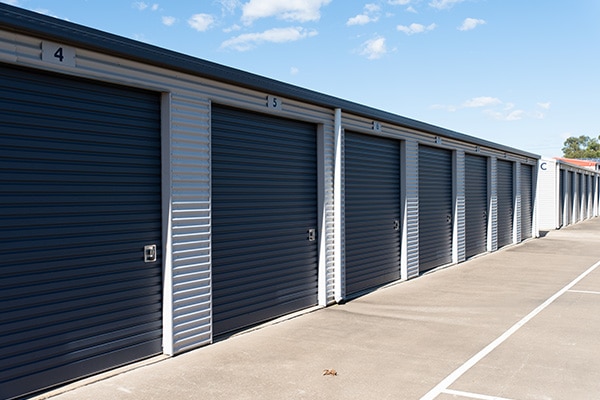
Invest In Self-Storage: Independent operators own about 75% of the assets in self-storage. Two out of every three are owned by single asset owners.
Can I give a two-part answer?
Absolutely.
I did a quick analysis for a BiggerPockets article I was writing. Just for fun, I was checking out Boise, Idaho, Nashville, and Atlanta. The three-mile radius around the center of Atlanta was significantly underserved with self-storage. If I could find an empty Sears or Kmart or Toys “R” Us or an empty warehouse or the land, which would be hard, I would consider Atlanta as one of the great cities to build in or to do a renovation project to take an old building and make it into a self-storage.
The second part of my answer would be Ishpeming, Michigan. What? Ishpeming, Michigan? It’s a town of 3,000. Our company invested in a huge self-storage facility in Ishpeming, Michigan. Everything in your brain probably says that’s crazy, but we invested in a 1,500-unit self-storage. It’s 160,000 square feet and it is going fantastic because it’s an undersupplied area. People are coming from a long way away to store there and I don’t mean Ishpeming specifically, even though that is a true story.
Consider investing in small towns because you’re not going to be that Bradenton, Florida deal where you get two competitors popping up next door. You’re not going to be in a place where it’s hard to get zoning. You’re not going to have all the struggles you have in a big city, especially with the competition. Small towns like Ishpeming and Beeville, Texas, where we invested, have proven their weight in gold because Americans are addicted to stuff. Whether they’re in a small town or a big city, self-storage can work well.
With how much free money has been out there, people have bought a lot of stuff over the last couple of years, so there might be a need for self-storage. People are migrating. In the American public, the new generations are becoming mobile. They’re becoming migratory. A brief question before getting to our last question and before the next segment of our show.
Talk to us about a term for these projects. We’re familiar with multifamily value-add, which is 3 to 7 years. That is somewhat changing. People are going to the fund model. They want to hold assets that are close to ten years to be a bit more risk averse for their investors. What is the industry standard term for a self-storage value-add project?
We’re using the same Fannie Mae and Freddie Mac debt and we’re talking to the same investor, so honestly, it’s about the same. My company tracks with Warren Buffett, who said, “My ideal holding time is forever,” and so we’re tracking toward the ten-year hold, but overall, a lot of these deals go well in the 3 to 7-year range as well.
You’re similar to multifamily. You’re opportunistic about your exit. Last question before the next segment of our show. We want to talk about this concept of co-sponsorship. You gave your seven paths to be able to invest in commercial real estate and be involved in these syndicate investments. Some of them entailed partnering with an operator. Briefly, does your firm partner with active operators as your boots on the ground in the assets that you acquire in self-storage?
It’s the only way we do it. We decided years ago that we could not be an expert in 5 or 10 different fields and asset classes. We thought that our investors and we deserved the diversification that comes from a fund like that, so we decided to go ahead and be a third party to every deal. We don’t own, we don’t operate, we don’t manage anything. We just find the best of the best operators. Our goal is that 80/20 curve where our goal is to be in the top 20% of the top 20% or the top 4% of the operators that are generating the top 80% of the top 80% of the results and so that’s all that’s the only way we do it.
When you create these partnerships, is it fair to say or is it likely that other groups and other individuals open the door for them to possibly partner with you? Are you strict when it comes to yourselves as the private equity group and then you’re an active operator as your boots on the ground through a partnership or is the door open for multiple co-sponsors to be involved?
We spend a lot of our time. We had 3 to 4 meetings in one day with potential operators that we might want to invest with. We spend a lot of time getting to know those operators. We check out their track record, team, technology, background, criminal history, and everything imaginable. We do due diligence on them, so when we invest, we’re choosing them. No one that I know of has ever come to us. We’ve chosen. We went out and found them and then we decided who we wanted to invest with and then we invested heavily with them. We invested up to $46 million with one operator in the last few years.
The reason I bring this up is that initially when we founded CPI Capital, our mandate was to acquire multifamily assets in the US in the Sunbelt states while partnering with retail investors, both Canadian and US investors. Soon we realized that so much of our time and resources were being spent on cultivating and nurturing relationships with investors that we decided to contract out the operation side to an active operator and we put our multifamily partners do the same process, but we did it out of a need not a want.
We needed to. We didn’t have the infrastructure in place but what happened eventually was that I realized that as we were making communications with these active operators across different regions in the US. It created a funnel for our deal flow because each active operator is out there vetting and looking at hundreds of deals before they go into contract in one deal. We’re sitting back and having all these different operators bring us deals and we’re cherry-picking the best deal. The business model itself ended up being a great model to follow. Is it fair to say you’re seeing a similar type of concept that I explained?
That’s exactly right. We cherry-pick some of the deals from some of the operators we work with, but some of them were so competent that we basically invest in their entire portfolio, so anything they buy this year will be part of it.
The last comment to make here before we move on. CPI is in the process of making the transition to becoming the operator. Are there any plans for your group to make that transition? Have you guys made the decision that your mandate is to allow the operation to be controlled by or handled by your operating partners?
Get a lot of training, get a great team around you, and be real careful. Click To TweetI am too old. I’m too old to start becoming an operator now and I don’t think Michael Phelps won 28 gold medals for the US in swimming if he had diversified out and tried to do shot put, javelin, running, and all kinds of other things. We wouldn’t have ever heard of him. I love the idea of taking a small piece of a whole lot of different specialists and that’s what we do. I look back over my years as an entrepreneur and realize I was never a good operator. I was always better at putting together deals, strategizing, raising capital, and connecting groups together. That’s what I do anyway.
We appreciate all the wisdom that you’ve instilled in us. We are certain that our audience will take a lot of value away from all your information. Amazing. Now we’re onto the next segment of our show.
It’s called The Ten Championship Rounds to Financial Freedom. Whatever comes top of mind. I’m going to go ahead and ask you the first question and we’re looking forward to seeing the man that you are. Here we go.
I’m nervous.
Paul, who was the most influential person in your life?
I’m going to have to say my dad. My dad was not an entrepreneur. He worked for a big company all his life, but in twelve years of me playing football, he never missed not only a game but he never missed a practice. He took off early every day even though he was an executive at this company. He was a great man. When I later went to work for that company as a summer hand in the factory, I found out that everybody, including his enemies on paper, loved and respected him.
What is the number one book you’d recommend?
I’m going to go with Gary Keller and Jay Papasan’s classic, The ONE Thing. It’s so important not to chase shiny objects, which I did, and to learn to focus your attention and be an extreme specialist on one thing like Michael Phelps.
We have to read that one, August. If you had the opportunity to travel back in time, what advice would you give your younger self?
I’ve thought about this quite a bit and if I would have listened, which I don’t know if I would have, I don’t know if I would have even gone to college. I would have, but I would have jumped straight into commercial real estate on day one. I have a lot of value from the years I spent in residential real estate but honestly, if I would have known the power, like you said earlier, of forced appreciation, value-add, and extracting intrinsic value, I would have never done anything else.
Paul, what’s the best investment you’ve ever made?
“In myself.” Am I supposed to say that? If I had to pick the best deal, our company was the largest investor in a mobile home park in Louisville. It was acquired in February 2020, right when COVID was hitting the headlines the same week. $7.1 million, half debt and half equity. The goal was to get it to a $13 million or even $14 million value in three years. Our operating partner, I should say, turned those knobs right in the middle of COVID, got a $15 million offer, and sold it in ten months for a 347% IRR.
Congratulations on that.
Thank you. The cool thing is this operator is doing this over and over. That happened to be an especially dramatic one because he sold it so quickly.
It’s the jockey, right? It’s a really good jockey.
That’s right. I have an article about that.

Invest In Self-Storage: The Securities and Exchange Commission looks really close at how you raise capital. They don’t like it if you’re trying to raise capital and commission unless you’re a licensed broker dealer.
Paul, what’s the worst investment you’ve ever made and what lessons did you learn from it?
How many hours do you have? I have several. I’m going to say we invested in a multifamily deal. This is the most painful one in Lexington, Kentucky. Our mentor said, “There are so many good things about this asset, but it was built in 1962. They did wrought iron pipes.” They didn’t tell me that, but soon after that, I learned that there were wrought iron pipes, and sometimes they go bad.
A year into owning this 125-unit $8 million apartment, we found out that some of the pipes were starting to fail and we were terrified because the first one we didn’t handle as well as we could have because it was an emergency. We spent $107,000 on the first one and there were eighteen other buildings. We were upset about this and there were other property management issues.
Lexington, Kentucky, got stalled for some reason on rent increases right about that time in the teens and so we ended up selling that. We sold it for more than we paid for it. We took a slight loss on it and it was painful because we had 48 investors who believed in us. I will tell you what we did. We offered those investors.
We said, “As hard as this is to say to you if you’ll reinvest with us in this next fund, which would be the self-storage and mobile home park fund, we promise you in writing that if you don’t recoup not only your losses but what you would have and what you expected to profit from that will write a check to you personally.” What did we learn? Listening to our mentor, who hinted that the 1962 buildings could be a problem.
Thanks for sharing that story. It’s nice that they offered their investments.
That’s the type of sponsor you want to partner with.
Paul, next question. How much would you need in the bank to retire now? What’s your number?
I tried to retire at 34 when I sold my company many years ago and I was miserable, so I decided I never wanted to retire. However, if I did, I don’t know because I have a big goal which we might get into one of the other questions, but I’ve got a big goal. That big goal is going to take millions of dollars a year alone to fulfill. Aside from that big goal, I would say $2.5 million in the bank.
I want to know what the big goal is.
You might ask it in one of the other questions. I don’t know. Do you have any questions about your big why?
No, we don’t. What’s your big why?
Ava, did you know if you took, not the average, the record profits of Apple, General Motors, Nike, and Starbucks, added that together and doubled that number, that’s the approximate revenue generated by human trafficking every year. It’s shocking and it’s happening right under our noses. I’d like to believe that if I was alive in the 1800s, I’d have been abolitionist fighting against slavery.
If I had been alive in the 1960s, or at least as an adult, I would have been fighting for civil rights. This is a civil right. This is slavery and it’s happening right under our noses. We are in a position where we can do something about it. My company, Wellings Capital, is trying to find and partner with the best and most effective agencies to fight this great evil and to free victims.
Next question. If you could have dinner with someone dead or alive, who would it be?
It might be George Müller. George Müller is somebody who spent a little time in Canada. George Müller was a Hellion in Germany in the early 1800s. He had a radical life change. He went to England and started opening up orphanages for orphans and he eventually took care of 10,000 orphans. Here’s the amazing part.
Do not chase shiny objects. Learn to focus your attention and be an extreme specialist on one thing. Click To TweetHe raised what we believe is about $250 million, maybe more in today’s dollars, and he never asked anybody for a penny. He did it all by faith, belief, having this great big mission, and believing that it would get funded if he kept moving forward and he did. It’s an amazing story. There are probably a dozen or two biographies about the guy out there, but he’s largely forgotten. He lived through the entire century of the 1800s.
I want to extend our 10 questions to 20 to keep talking to Paul.
Also, learning lots from him.
You’re too nice.
Paul, this is going to be interesting. If you weren’t doing what you’re doing, what would you be doing now?
I love what I do. I love introducing people to commercial real estate and I can’t imagine doing anything else but going back to my previous comments, I would be involved in trying to rescue slaves out of human trafficking and try to help them connect to rehabilitation.
Just quickly on that. Is human trafficking mainly focused on when people try to come to certain places like Europe, Africa, and the Middle East and to America from South and Central America for better lives? In the process, do they happen to owe some money going into this life? Is that the primary reason for human trafficking?
Of all of the time I’ve spent in this arena, I don’t know the answer to your question. That is certainly a big factor. I know in India, they’re lured away from these villages unknowingly and told that they could get great jobs in Delhi or some other big city in India and then they find out that when they get there, they’re trapped and enslaved. This is happening in the United States and all around the world. One of the best ways to fight it is to pass laws to make it a very serious criminal offense to hire a prostitute. From what I heard, Canada took some good steps in that regard at one time, in the last few years.
Prostitution in Canada is legal. It’s living off the veils of prostitution, which is a criminal code offense but Canada is open-minded on the concept of it is a woman’s right if they wish to.
I don’t mean to get too opinionated here, but the problem with that is if you talk to and get to the bottom of the story, almost all those other people, the women’s right, most of them were enslaved, trapped, or something horrible happened in their childhood and they don’t think they can do any better than that. What I was referring to is there’s an organization called Exodus Cry.
They have done a great job explaining all the evils of this industry and their founder told me that they had shown that film to some lawmakers in Canada who were about to make a certain law and they went the complete opposite direction after seeing the film. I don’t know exactly what the law was. I should find out.
It was passed by the Supreme Court, which became actual case law to be followed. We answered that question. Next question.
I’m excited about this one.
This is a great question to ask an author and an academic.
Book smarts or street smarts?
Definitely, street smarts.

Invest In Self-Storage: The asset manager and construction manager are probably the hardest piece. They deserve the biggest piece of the pie.
Last question. If you had $1 million in cash and you had to make one investment now, what would it be?
I’m going to re-emphasize this question because it’s $1 million cash, so it’s liquid. You can make only one investment and you have to do it now. Let’s say in the next 24 hours, you have to deploy it. What would you do?
I don’t mean to sound like I would invest with my own company, but I really would and I’ve proven that over and over. I have been investing every chance I get with our own company. However, if I had to pick one of our operators, it’s an operator in Nevada called Crystal View Capital. They do an incredible job of finding these off-market, undervalued, intrinsic value-laden deals in self-storage and mobile home parks. They do an incredible job of doing this. Those are the examples I’ve even used on this podcast and Ishpeming, Michigan, Beeville, Texas, and Louisville. They do a great job of extracting value and providing returns for their investors. I would definitely do commercial real estate. It would be us or if not us, them.
Let’s give some props to the acquisition director of Crystal View Capital because we know he or she is hard at work.
That is it. That’s the key.
Last question. What’s the best way that people can reach you?
They can pick up my book Storing Up Profits on Amazon or BiggerPockets. They can reach out to me. I’ve got some wonderful special reports on how to get involved in commercial real estate, self-storage, and mobile home parks. You can go there to our website WellingsCapital.com.
We appreciate you being here. Thank you.
Thank you so much, Paul.
Thank you. It’s a great honor to be here.
